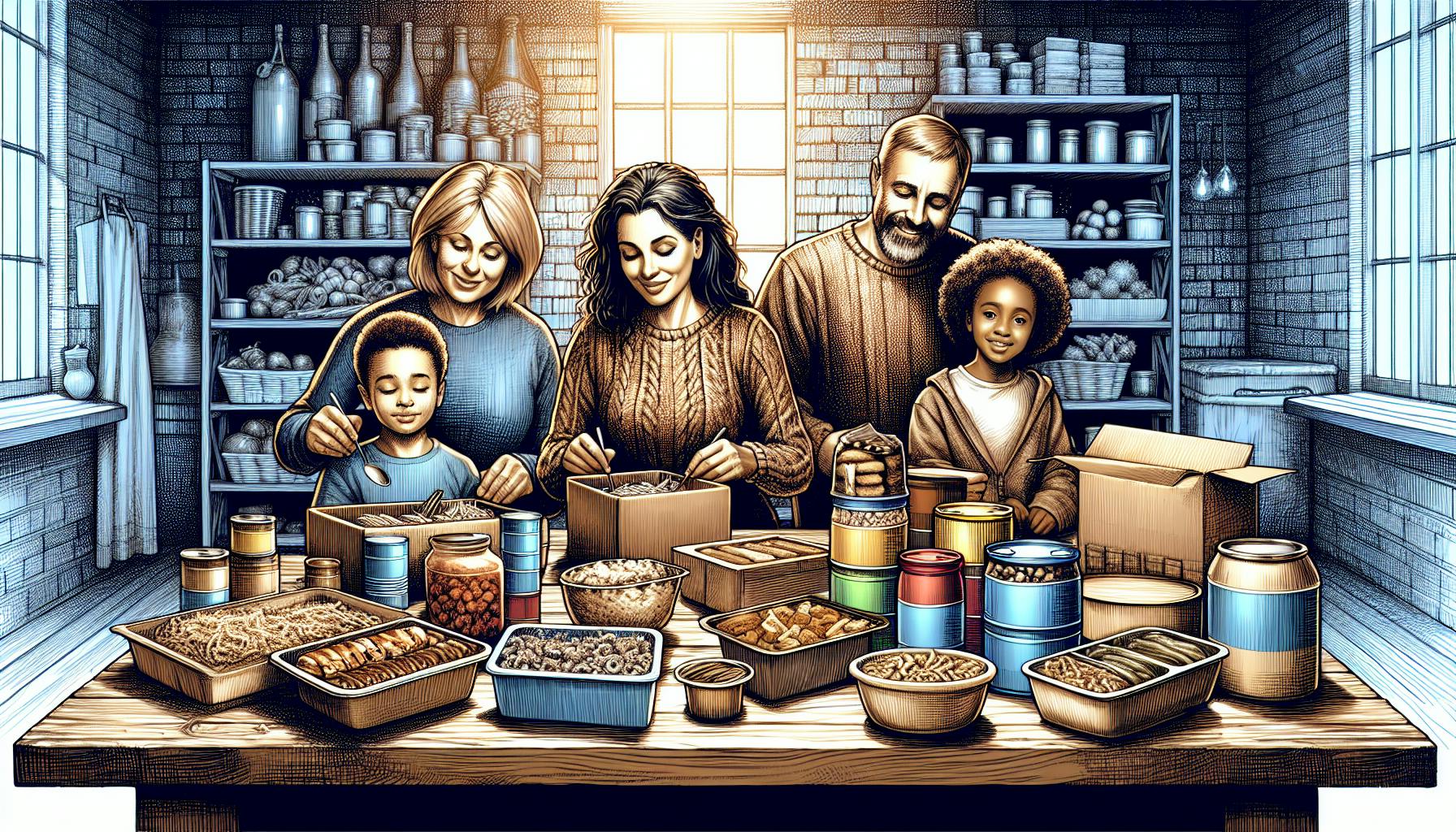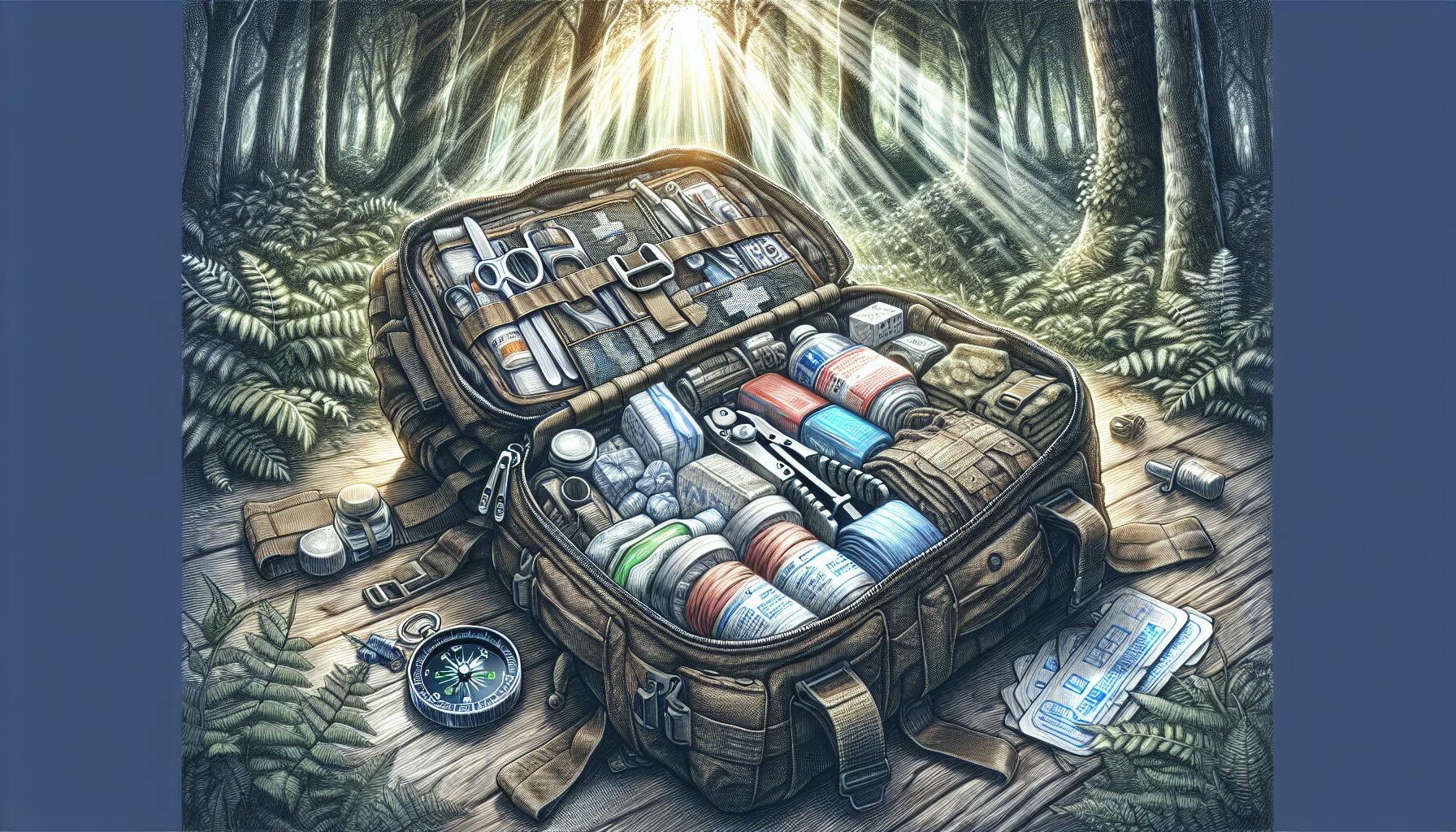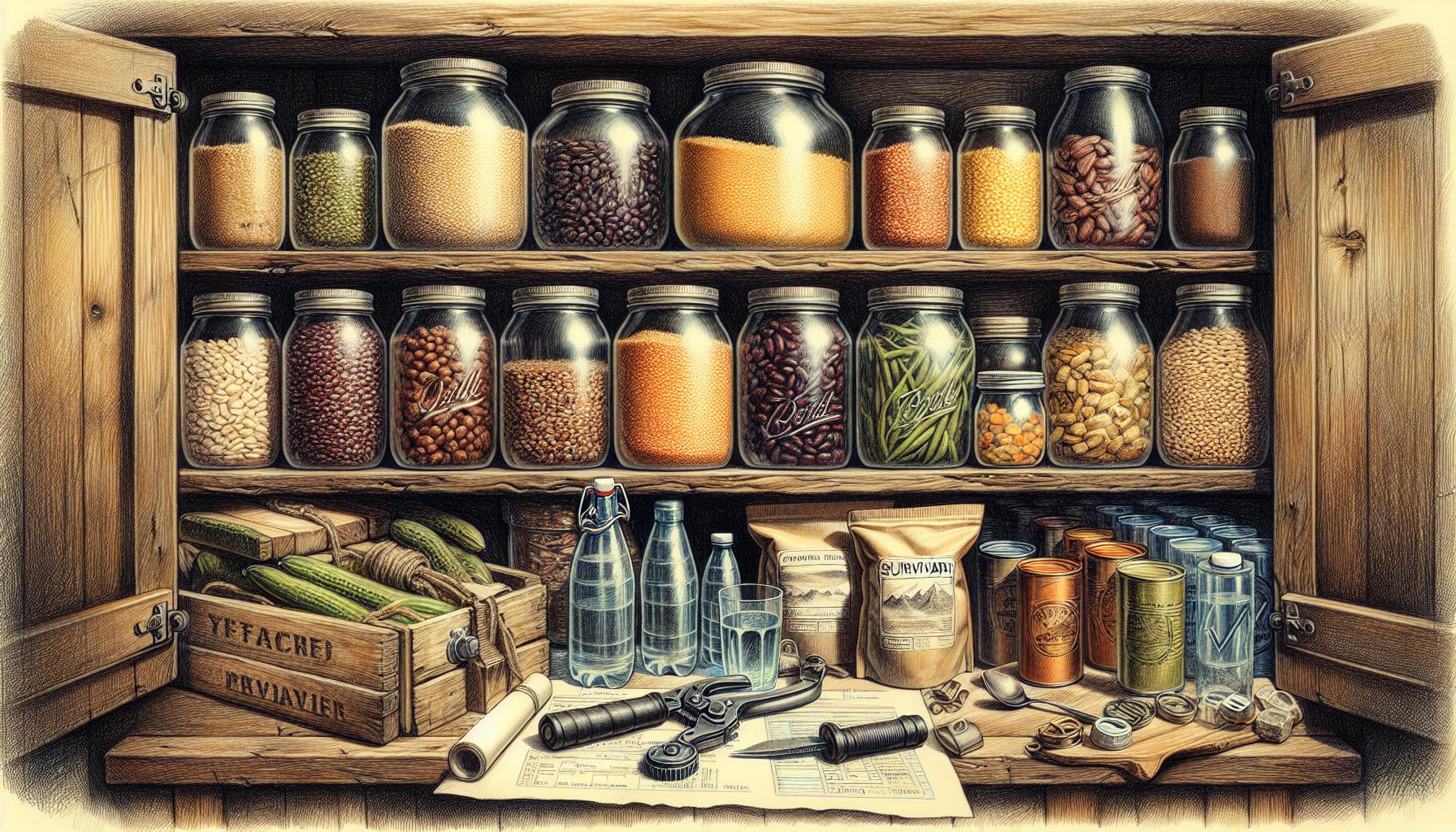Prepping for emergencies often overlooks one of the most critical supplies: clean water.
Having the right water purification supplies can mean the difference between sickness and health when disaster strikes.
In this guide, we'll explore the best prepping gear for purifying water, including gravity filters, pump filters, straw filters, and purification tablets.
Introduction to Water Purification in Emergencies
Understanding the Importance of a Clean Water Supply
Having access to clean, potable water is critical in any emergency situation. When disasters strike, normal water sources can become contaminated with bacteria, chemicals, debris and other dangerous substances. Drinking unsafe water can lead to severe illnesses like cholera, typhoid and dysentery. Proper water purification prepares preppers to provide for their own basic water needs during crises when tap water may be unavailable.
Identifying Common Water Contaminants and Risks
Common contaminants found in water during emergencies include:
- Bacteria and parasites from sewage leaks
- Toxic chemicals from industrial spills
- Debris, mud and microplastics from flooding
- Fuel and other hazardous materials
If ingested, these contaminants can cause severe gastrointenstinal illness, kidney/liver damage, and even death in some cases. Having the ability to remove these risks is key for survival preparedness.
Setting the Goals for Emergency Preparedness
The goal of this article is to explore reliable methods and equipment for purifying water during disasters and emergencies. Key priorities include portability, ease of use, effectiveness against common contaminants, and affordability. The recommendations outlined below aim to help preppers ensure access to safe drinking water for their families, even when tap water is not available.
What prepper supplies should I stock up on?
Having the right supplies on hand is critical for emergency preparedness. Here are some of the most essential items every prepper should have in their stockpile:
Water
- Store at least one gallon of water per person per day for drinking and sanitation needs. Plan for enough water to last several days. Store water in food grade plastic containers and replace every six months.
Food
- Stock up on non-perishable foods like canned goods, dried fruits and vegetables, nuts, protein bars, and MREs (Meals Ready to Eat). Have at least a three day supply, but ideally two weeks worth of food. Check expiration dates and rotate stock.
Communication and Information
- A battery-powered or hand crank radio will allow you to get weather updates and emergency broadcasts when the power goes out. A NOAA weather radio will sound an alarm if there are extreme weather warnings.
Light
- Flashlights and lanterns with extra batteries provide light when the power goes out. Candles can also be used, but present a fire hazard.
First Aid Supplies
- A well-stocked first aid kit includes bandages, gauze, medicines, etc. Know basic first aid and CPR.
Tools
- It's good to have a whistle to signal for help, duct tape, and a multi-tool or pocket knife. Rope, tarps, stakes and bungee cords have many uses from securing belongings to improvising shelter.
Prioritizing water, food, communication, first aid, and versatile tools will help ensure you have what you need to safely ride out emergencies and power outages. Check and resupply disaster kits twice a year.
What does every prepper need?
When building an emergency preparedness kit, there are some essential supplies that every prepper should have on hand. Here are some of the most important items to stock up on:
Water Purification
Having access to clean drinking water is critical in an emergency situation. The [best prepping supplies](best prepping supplies) for water purification include:
- Portable water filtration systems - These allow you to filter water from lakes, streams, etc. to remove bacteria, parasites, and sediment. The Sawyer Mini and LifeStraw are top-rated options.
- Water purification tablets - Tablets like Potable Aqua use chlorine dioxide to kill pathogens. They're inexpensive, lightweight, and easy to transport.
- A metal water bottle or canteen - You need something durable to collect, carry, and drink water from. Stainless steel bottles from brands like Hydro Flask work well.
Food Supplies
Stock up on nutritious, non-perishable foods like:
- Canned goods - Focus on canned meat, fish, fruits, vegetables, beans, soups, etc. Avoid salty options.
- Dried foods - Dried beans, lentils, pasta, rice, fruits, jerky, and freeze-dried meals are convenient options.
- Emergency food bars - High in calories and nutrients, these compact bars can sustain you for days.
First Aid Supplies
A well-stocked first aid kit is a must, containing items like:
- Bandages, gauze, tape, trauma pads, butterfly bandages
- Antibiotic ointment, hydrocortisone cream
- Medical gloves, scissors, tweezers
- Thermometer, safety pins, antiseptic wipes
Be sure to regularly check expiration dates and restock as needed!
What is the first thing a prepper should buy?
When getting started with prepping, having the essential supplies on hand is key for emergency preparedness. According to prepping experts, the first items every prepper should invest in are:
Water Storage and Filtration
- Store at least 1 gallon of water per person per day for drinking, cooking, and hygiene. Consider storing bottled water or setting up water barrels.
- Get water filtration systems like the Sawyer Mini or Lifestraw to filter collected rainwater or other water sources. Water purification tablets are another good option.
Long-Term Food Supplies
- Stock up on long-lasting emergency food supplies with a shelf life of 5-10 years from brands like Mountain House. Prioritize calorie-dense foods.
- Consider freeze-dried and dehydrated foods as they last longer.
First Aid Supplies
- Have bandages, gauze, antibiotics, pain meds, etc. to treat injuries when medical care may be limited. A comprehensive first aid kit is essential.
Sanitation and Hygiene Items
- Stock toilet paper, soap, toothpaste, feminine products, bleach, and other sanitizers to maintain health and prevent illness.
Starting with these basic necessities helps prepper beginners ensure their family has drinking water, food, medical care, and sanitation during an emergency situation. Investing in these key categories first builds a foundation for expanding your preparedness supplies as your budget allows.
What should I stockpile for doomsday?
When preparing for a disaster scenario, having at least a week's supply of essentials is recommended by experts. Here are some key items to include in your stockpile:
- Food - Choose non-perishable foods that do not require refrigeration and are low in salt content. Canned goods, dried foods, nuts, and crackers are good options. Make sure to stock foods your family already eats.
- Water - Aim to have at least one gallon of water per person per day for at least 7 days. Store water in food-grade plastic containers and replace it every 6 months.
- Light Sources - Pack flashlights, lanterns, headlamps and extra batteries. Candles can also provide light.
- Communication - Keep an emergency radio and portable chargers for your devices on hand. Also have copies of important documents stored.
- Tools - Manual can opener, multi-tool, duct tape, garbage bags, gloves and other gear can assist with tasks.
- First Aid Supplies - Stock your standard first aid items plus medications and prescription drugs you normally use.
When space allows, gradually build up longer-term reserves of these essentials. Rotate and replace items before they expire. Being prepared can provide peace of mind if an emergency situation arises.
sbb-itb-b932644
Selecting the Best Filtration Systems for Survival Gear
When building an emergency preparedness kit, having reliable access to clean water is critical. Filtration systems are essential gear that preppers should invest in to ensure a safe water supply during a crisis. This section covers some of the top filtration methods to consider.
Gravity Filters: A Prepper's Ally for Clean Water
Gravity water filters are a tried and true choice for many preppers. They use physical straining and filters to remove bacteria, protozoa, and sediment without needing power. Simply fill the top container and let gravity do the work as water flows through the filtration media into a container below.
The Sawyer Mini and Lifestraw Family gravity kits are compact, portable, and ideal for small groups. For larger volumes, Platypus GravityWorks and Katadyn gravity filters are top contenders, with some models filtering up to 2 gallons per minute.
Pump Filters: Ensuring a Reliable Clean Water Supply
Pump filters like the Katadyn Hiker Pro are another staple of bug out bags. These systems use mechanical pumping to force water through a filter, removing viruses, bacteria, protozoa and more.
The benefit of a pump filter is that it can handle higher sediment levels than some gravity models before clogging. Pumps also allow you to easily control water flow rate. Just be wary of mechanical issues down the line.
For heavy-duty purification, the First Need XL pump goes beyond standard filters to utilize a multi-stage system including carbon filtration and ion exchange resin. This removes chemical contaminants like pesticides as well.
Straw Filters: Essential Survival Gear for On-the-Go Purification
For lightweight personal use, straw filters enable you to drink directly from lakes, streams, and other water sources while removing pathogens. No pumping or containers required.
The tried and true LifeStraw Personal Water Filter is a prepper favorite for its simplicity and portability. Other options like the Sawyer Mini Water Filter have a built-in pouch allowing you to fill up and drink on-the-go.
One drawback is that straw-style filters tend to have a lower total capacity before needing replacement compared to pumps and gravity models. But they provide an indispensable minimalist solution.
Investing in water filtration gear is a key step in emergency preparedness. This overview of some top systems across categories can help guide preppers in selecting options tailored to their needs and budget. Ultimately the right choice comes down to the anticipated situations, group size, and volume of water required.
The Role of Purification Tablets in Emergency Survival Kits
Purification tablets are an essential component of any emergency survival kit. These small tablets release chlorine dioxide or iodine to kill harmful microorganisms in water, making it safer to drink during a crisis when normal purification methods may not be available. For preppers focused on self-reliance, having access to clean drinking water is a top priority.
Understanding How Purification Tablets Work
Water purification tablets work by releasing a disinfecting agent, usually chlorine dioxide or iodine, into contaminated water. The disinfecting agent damages the cell membrane of microorganisms like bacteria, viruses, and protozoan cysts, neutralizing their ability to reproduce and make you sick. The tablets simply need sufficient time, typically 30 minutes to 4 hours depending on the product, to work before drinking the water. This makes them an incredibly portable and effective water treatment solution.
Selecting the Best Purification Tablets for Prepper Supplies
When selecting purification tablets for your prepper supplies, trusted brands like Potable Aqua, Aquamira, and Katadyn are recommended for their EPA-registered formulas proven to eliminate waterborne pathogens. Potable Aqua offers affordable and long-lasting tablets containing tetraglycine hydroperiodide and sodium chlorite. Aquamira and Katadyn also provide effervescent chlorine dioxide options engineered to handle viruses and harsh water conditions. Purchasing a 6-month to 1-year supply ensures you have enough tablets on hand for emergency needs.
Effective Usage of Purification Tablets for Water Safety
To properly use purification tablets:
- Carefully read and follow dosage instructions on the package based on water container size. Most tablets treat 1 liter or 1 quart of water.
- Add the recommended number of tablets to your water container and shake or swirl to dissolve and disperse the disinfectant.
- Allow water to sit for the full contact time listed on the label before drinking, typically 30 minutes to 4 hours depending on the product. This gives tablets time to fully neutralize contaminants.
- Water should have a slight chlorine taste and smell if purification was effective. An unpleasant odor could mean organic contaminants are still present.
With the right products and proper usage, purification tablets provide preppers vital insurance against waterborne illness during emergencies when regular tap water may be unavailable or compromised. They are an inexpensive, portable solution that belongs in every survival kit.
Alternative Methods for Ensuring a Clean Water Supply
Beyond filtration systems and purification tablets, preppers can utilize several alternative methods to render found water sources potable.
Boiling Water: A Time-Tested Purification Method
Boiling is one of the oldest and most reliable methods of water purification. Simply bringing water to a rolling boil for 1-3 minutes will kill most disease-causing microorganisms like bacteria, parasites, and viruses.
The advantages of boiling water are that no special equipment is needed beyond a heat source and container. Any found water source can be purified with this method, even if it contains floating debris or sediment. It's also highly effective when done properly.
The downsides are that it requires spare fuel and takes time for the water to reach the proper temperature. It also does not remove chemical contaminants. But for most biological pathogens, boiling is a straightforward emergency purification technique preppers should have in their toolkit.
DIY Filter Systems: Prepper Innovations for Clean Water
Rather than relying solely on portable filtration devices in a grid-down scenario, preppers can construct improvised filters from materials commonly on hand. Examples include:
- Sand, gravel, and cloth filters - Dig a hole in the ground and line it with fabric, then layers of sand and gravel. The makeshift filter will trap debris and some microbes.
- Charcoal filters - Crush charcoal bits from a campfire and mix with sand and rocks to create a homemade filter medium. Water filtered through this will have many impurities removed.
- Soda bottle and coffee filter - Poke small holes in the bottom of a plastic bottle, place a coffee filter inside attached to the neck with a rubber band, then pour water through to strain out particles.
These DIY options are far from perfect, but they provide viable methods of filtering water when store-bought purifiers are not available. Testing water quality before and after with test strips can verify their effectiveness.
Harnessing Sunlight for Water Purification
Exposing water stored in clear plastic bottles to direct sunlight can also serve to make it safer for drinking. The ultraviolet rays in sunlight work to damage the DNA and cells of bacteria and other microbes, rendering them unable to reproduce or infect.
However, effectiveness depends on water clarity, exposure time, and sunlight intensity. Cloudy water or partial sunshine blocks the UV rays from penetrating deeply enough to fully disinfect. But used in combination with filtration and boiling, solar disinfection can be a worthwhile supplementary purification technique for preppers when SHTF. Clear bottles could be left to sit in the sun for 6+ hours when possible to maximize pathogen deactivation.
Strategic Planning for Water Purification in Emergency Preparedness
As preppers assemble emergency kits, having a strategic plan for water access, storage, and purification is crucial. Here are some key considerations to keep in mind:
Assessing Water Needs for Emergency Scenarios
- Carefully calculate expected water usage based on group size, climate, length of emergency, etc. A good rule of thumb is 1 gallon per person per day for drinking and basic hygiene.
- In hot climates or scenarios involving hard physical labor, plan for more water - potentially 1.5-2 gallons per person daily. Dehydration is dangerous.
- Consider special needs such as infants, pregnant women, seniors, or those with medical conditions. Their water needs may differ.
Water Storage Solutions for Preppers
- Store water in food-grade plastic jugs, barrels or buckets with tight sealing lids. Ensure they did not previously hold chemicals.
- Glass containers can break in disasters. Avoid using them for water storage.
- Calculate ideal capacity based on group size and projected duration of emergency situation.
- Store containers in cool, dark locations to prevent algae growth and plastic degradation.
Ensuring Purification Redundancy in Prepper Supplies
- Even stored water can develop bacteria over time. Have multiple purification methods on hand.
- Filtration systems effectively remove pathogens, but may fail. Have chemical treatments like purification tablets as backup.
- Boiling water is an old standby, but requires fuel. Consider including a small camp stove and fuel in kits.
- Learn purification techniques like SODIS solar disinfection as a last resort if supplies run out.
Following strategic plans for water ensures preppers can safely meet this critical need in emergencies. Assembling the right storage solutions and purification gear provides necessary redundancy.
Conclusion: Essential Prepping Supplies for Water Purification
Having reliable access to clean water is critical in an emergency situation. This article has covered some of the best options for water purification that preppers should consider having in their supplies.
Here is a brief summary of the key recommendations:
- Filtration systems like the Sawyer Mini and LifeStraw are portable, easy to use, and filter out bacteria, protozoa and solids. They are ideal for filtering water from natural sources.
- Water purification tablets like Potable Aqua chlorinate water to kill bacteria and viruses. They are inexpensive, lightweight, and good to have as a backup option.
- Storing water in advance is important. Clean, sealed containers will keep water safe for several years. Rotate and refresh supplies annually.
- Emergency disinfection bleach can be used sparingly when no other options are available. It is caustic so handle carefully.
Having multiple methods for getting safe drinking water is important for full preparedness. Consider your needs, budget and scenarios when choosing water purification and storage supplies. Test and refresh equipment and supplies regularly.


